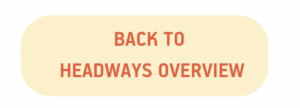Cultures of Thinking: Approaches to Teaching and Learning – Australasian Cohort
Headways™ 2023-2024 Cohort Offering
Cohort Region: Australasia
Overview: What do we want the children we teach to be like as adults? When and where have you been part of a thinking culture? (Ritchhart, 2015). Since 2016, Brisbane Girls Grammar School has been educating teachers and students about the forces that shape classroom culture drawing upon the Cultures of Thinking Research Project that emerged from the Harvard Graduate School of Education’s Project Zero educational think tank. This work prioritises the development of places where a group’s collective thinking, as well as each individual’s thinking, is ‘valued, visible, and actively promoted as part of the regular day-to-day experience of all group members’ (Ritchhart, 2015, p.3).
Facilitators: Susan Garson, Director of the Centre for School-wide Pedagogy and Andrew Pennay, Director of Creative Arts at Brisbane Girls Grammar School at Brisbane Girls Grammar School (Brisbane, AUS)
Dates: 15 February 2024; 14 March 2024; 9 May 2024; 6 June 2024; 1 August 2024
Time: 3.30-4.30 p.m. AEST via Zoom
Discussion Topics
Thursday, 15 February 2024, 3.30-4.30pm AEST
The Eight Forces that Shape Culture
It is important to understand how group culture is ‘created, sustained, and enhanced’ (Ritchhart, 2015, p.6). The eight cultural forces, at the core of Cultures of Thinking, have been identified through extensive research as contributing to the fundamental DNA of classrooms (Ritchhart, 2015; Ritchhart & Church, 2020). These eight forces are expectations, language, time, modelling, opportunities, routines, interactions, and environment (Ritchhart, 2015). According to Ritchhart (2015), quality teaching and learning occur when we are aware of the ways in which they overlap.
This session will consider:
- six key principles of the Cultures of Thinking project
- the eight cultural forces as a framework for understanding and assessing teacher and student involvement in the learning process. It is important to harness these forces to move the learning culture forward in a constructive way
- vignettes, three minutes of a lesson: break-out into observation groups by cultural force
- reflections and reporting back
- planning a way forward
Thursday, 14 March 2024, 3.30-4.30pm AEST
Understanding Map (Expectations for your Learners)
The Understanding Map is a visual depiction of the ways in which students make meaning and understand concepts. It was one of the resources produced by researchers in the Cultures of Thinking Project. Classrooms that are more focused on thinking, learning, and understanding tend to be more collaborative. Teachers can use the Understanding Map as a planning tool. It can also be a reference point to establish expectations for thinking for learners.
This session will consider:
- the cultural force of expectations as a precursor to using the Understanding Map
- thinking moves that sit closest to, or farthest from, the theme of understanding as a residual of classroom learning
- case studies using the Understanding Map with teachers and students
- reflections and reporting back
- planning a way forward
Thursday, 9 May 2024, 3.30-4.30pm AEST
Questioning (Interactions and Modelling)
Asking questions is an essential component of a learner’s toolkit that allows people to think critically, feel greater ownership of learning, and become more confident when inquiring about the world. Generating and improving questions is an important skill for both teachers and learners as they engage in the enterprise of education. Questions drive thinking and action.
This session will consider:
- the cultural forces of interaction and modelling underpinning thoughtful engagement
- a typology of classroom questions and the ‘catch and pass’
- 100 Questions to ask your students in discussion
- the Question Formulation Technique in action
- reflection and reporting back
- planning a way forward
Thursday, 6 June 2024, 3.30-4.30pm AEST
Slow Looking at Images and Text (Opportunities and Time)
Project Zero researcher Shari Tishman offers a definition of ‘slow looking’—the practice of observing detail over time to move beyond a first impression and create a more immersive experience with a text, an idea, a piece of art, or any other kind of object (Tishman, 2018). Slowing down to look carefully involves patient, immersive attention to content. This can produce active cognitive opportunities for meaning-making and critical thinking that may not be possible through high-speed means of information delivery ( https://pz.harvard.edu/). It is important for teachers to plan opportunities for slow looking, inviting students to take more time to interrogate and understand content.
This session will consider:
- the cultural forces of opportunities and time that underpin slow looking
- slow looking experiences with artworks and texts
- Thinking Routines that are useful to scaffold slow looking learning opportunities
- reflection and reporting back
- planning a way forward
Thursday, 1 August 2024, 3.30-4.30pm AEST
How can we make the invisible, visible? (Routines and Environment)
How do we know our students are thinking and how do we know they understand the concepts and skills taught in classrooms? Visible Thinking began as an initiative to develop a research-based approach to teaching thinking dispositions in areas such as truth-seeking, understanding, fairness, and imagination ( https://pz.harvard.edu/). Thinking Routines are content-free scaffolds that guide students through thought processes. Routines invite collaborative effort and the documentation of thinking in different topics of study.
This session will consider:
- the cultural forces of routines and environment when inviting students to think with and about content
- core Thinking Routines in action
- vignettes, three minutes of a lesson – what is surprising about process and product?
- reflection and reporting back
- planning a way forward
